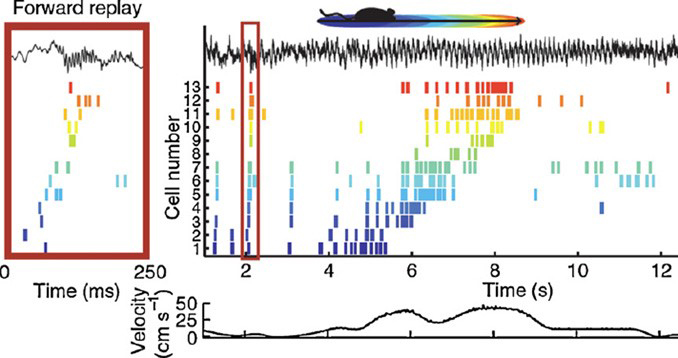Monday, 8 November 2021
An example of the importance of our brain rhythms

A large majority of the neurons in the human brain display rhythmic activity patterns—in other words, they send out one nerve impulse, then go quiet, then send out another nerve impulse, and so on. These patterns, which have different frequencies, are one of the neurons’ preferred means of communicating with one another. But unfortunately, college and university neuroscience textbooks discuss the brain’s neural rhythms only very superficially, even though they are actually starting to shed light on many different scientific mysteries. One good example is the consolidation of learning, which is associated with certain types of neural activity in the hippocampus. That’s just about all that a lot of textbooks have to say on the subject—nothing about what specific mechanism might be involved. Or you might read that your recently acquired memories are consolidated while you’re asleep or reconsolidated when you retrieve them, and that the hippocampus is somehow involved, but that’s it.
The fact is that nowadays, we know a lot more about these phenomena. But to discuss them in any greater depth, you really can’t avoid talking about brain rhythms. For example, neuroscientists have discovered that the sharp wave–ripples (rapid oscillations at frequencies of 150 to 200 Hz) that are specific to the hippocampus can represent past and potential future experiences. In experiments with rodents, disrupting these patterns disrupted the animals’ memories, as observed through their behaviour. On the basis of such observations and many others, some scientists have hypothesized that the sharp wave–ripples of the hippocampus enable the retrieval of memories that can then be used immediately by other brain circuits downstream that are involved in decision-making, planning, recollection and/or imagination, while simultaneously initiating memory-consolidation processes.
That’s already pretty interesting, but that’s not all! In one set of experiments, scientists recorded the activity in a rat’s hippocampus as it travelled down a linear corridor to get a food reward, Once the rat had completed a few trips down the corridor, the scientists watched the rat stand motionless before starting its next trip, while a series of place cells fired and sharp wave–ripples were triggered in its hippocampus. And these place cells fired in the exact same sequence (only sped up) as when the rat had actually been moving down the corridor past their receiving fields! Not only that, but when the rat reached the end of the corridor and began eating its reward, the researchers observed other sharp wave–ripples while its hippocampus played back (this time in reverse) the same sequence of place-cell firings as when it had been making the trip, as if the rat were re-encoding this precious sequence that had led it to its yummy treat!
What these findings tell us is that the meaning of a nerve impulse triggered in a place cell at any given point in time will depend on its relationship to the particular phase of a rhythmic wave pattern that is occurring in the background at that same time. One analogy might be the way that the number of hours of daylight and the outdoor temperature at a given point on Earth on a given day will depend on the planet’s slower, year-long revolution around the Sun, which determines the season. Just another example of how to even begin to understand the smallest cognitive process, we must also consider the dynamic, rhythmic nature of the brain’s activity.
Memory and the Brain | Comments Closed








